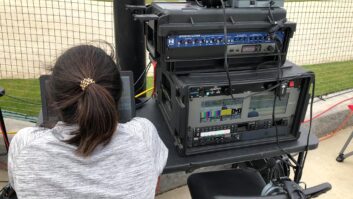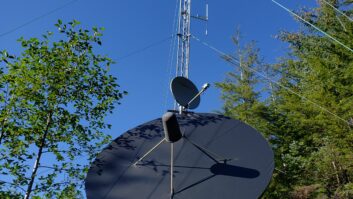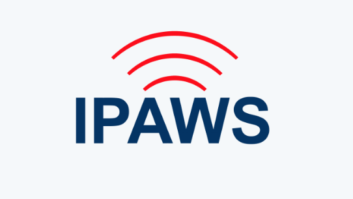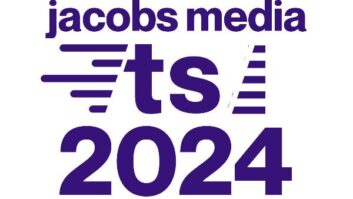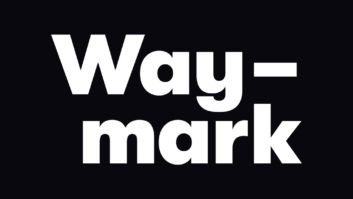IBOC Update – Jan 14, 2004
Jan 14, 2004 12:00 PM, compiled by Mark Krieger
Index:
- Kenwood, Panasonic, Onkyo, JVC, and VisteonPremiere HD Radio Receivers
- Iowa is Kick-off Point for HD Radio ReceiverSales
- NPR Provides In-depth look at Tomorrow Radio toNRSC
- FCC Considers Use of Separate Digital/Analog FMAntennas, Seeks Comments and Evaluations for PossibleRulemaking
- An Introduction to the New Language Surrounding HDRadio
- Delphi, Panasonic and Visteon Demo HD TrafficInformation Systems at CES
- Audio Processing Manufacturers: There’s More to HDRadio Than Transmitters and Antennas
To receive these articles twice a month in your e-mail, subscribe tothe IBOC Update – Insight on HD Radio e-newsletter. Click here to subscribe.
News
Kenwood, Panasonic, Onkyo,JVC, and Visteon Premiere HD Radio Receivers

CES – The long awaited debut of HD Radio consumer receivers arrivedas industry leaders displayed new offerings from three major consumermanufacturers at the CES in Las Vegas on January 7.
“CES brought you a first look at this promising technology in 2001.Today marks a historic moment for the radio broadcast and consumerelectronics industries,” said Consumer Electronics Association (CEA)President and Chief Executive Officer Gary Shapiro. “The transition ofthe world’s last major medium, AM and FM radio, from analog to digitalis now fulfilled with the availability of HD Radio receivers forconsumers.”
Manufacturer Kenwood says it will be shipping its KTC-HR100 tuners thismonth. JVC’s offering, a single-DIN model, is expected to be availableduring the spring, as will be Panasonic’s CB9900U. Onkyo claims it willbe introducing several models this year and plans to offer a modularsystem approach that allows consumers to add features as desired.
Iowa is Kick-off Point for HD RadioReceiver Sales
Cedar Rapids, IA – America’s heartland became the starting line inthe race to deploy HD Radio, as consumer electronics giant KenwoodAmerica announced the first sale of a consumer receiver in CedarRapids, IA, last week. On Monday, January 5, 2004, Nathan Franzenpurchased a Kenwood KTC-HR100 HD Radio tuner at UltimateElectronics.
Following installation in his 2001 Pontiac Grand Prix, Franzen tuned into IBOC broadcaster KZIA-FM, Z102.9, and became the first Americanconsumer to experience the new sound and features of HD Radio. TheCedar Rapids outlet of Ultimate Electronics also claims the distinctionof being the first retailer to sell a high-definition televisionnationally.
NPR Provides In-depth Look atTomorrow Radio to NRSC
On Friday, Jan. 9, a research initiative by National Public Radio,in conjunction with technology sponsors Kenwood America and HarrisCorporation, presented the results of advanced HD Radio field tests toa meeting of the NRSC in Las Vegas, Nevada. The project, dubbedTomorrow Radio, was conceived with an eye to exploringmulti-channel broadcasting possibilities for NPR’s approximately 750member/affiliate stations across the United States. The tests,conducted over HD radio signals originating from NPR affiliate stationsKALW-FM, San Francisco, KKJZ-FM, Long Beach, and WETA-FM, WashingtonDC, successfully demonstrated the viability of transmittingsupplemental audio channels (SAC) along with a main audio programchannel.
“Multicasting on SACs is real, and it works better than weanticipated,” said Mike Starling, NPR’s vice president for engineeringand operations. “HD radio is no longer just a hypothetical construct.Tomorrow Radio is here today.”
The Tomorrow Radio approach capitalizes on HD Radio’s 1kb/s scalablearchitecture. With an FM signal that is capable of delivering a maximum96kb/s stream of program audio data, multiple audio channels may bemade available at reduced bit rates. Combined with increasinglysophisticated low bit-rate encoding algorithms such as AAC, abroadcaster could format a multi-channel signal in a variety of ways,depending upon the nominal performance requirement for each channel’sprogram audio.
Tomorrow Radio’s fall/winter 2003 field tests involved four NPR memberstations along with NPR’s Tomorrow Radio sponsors Kenwood USA (whoprovided the test receivers and mobile test lab for the field test) andHarris (who provided transmission equipment to each of theparticipating field test stations). Field tests were done over sevenweeks, with testers spanning 7,500 miles and collecting over a milliondiscrete data points. The testing is said to have documented excellentcity-grade coverage for the all-digital SAC under experimental licensesfrom the FCC.
“This technology is key for public radio,” Starling continued. “Havingthe ability to broadcast multiple channels using existing spectrummeans that nonprofit radio stations can do more with what they alreadyhave, and lessens the pressure to compete for scarce and expensive newfrequencies. And listeners could be the biggest winners, with even morepublic radio and services at their fingertips.”
Tomorrow Radio Project expenses were incurred by NPR, NPR memberstations, along with sponsors Harris Corporation. and Kenwood USA. Whencombined, the total cost of this round of SAC field tests is estimatedto have exceeded $1 million.
NPR and Tomorrow Radio sponsors will share the 2003 field test resultswith the FCC in the next few weeks and seek authority for NPR memberstations to begin initial SAC broadcasts. Kenwood USA has indicatedproduct support will promptly follow FCC authorization of the newservices.
NPR contracted with consulting engineers Hammett & Edison for testplan oversight, data collection and certification of final results. TheCorporation For Public Broadcasting collaborated on test objectives andalso provided significant financial support for the Tomorrow RadioProject tests.

FCC Update
FCC Considers Use of SeparateDigital/Analog FM Antennas, Seeks Comments and Evaluations for PossibleRulemaking
In a public notice issued in December, the FCC indicated that itseeks comments on the use of separate, co-located antennas to transmitthe digital and analog signals separately. The Public Notice concerningthis configuration, known as “space combining,” was triggered by afield test report submitted by an NAB sponsored ad hoc technical groupon July 24, 2003.
This action is significant because the FCC had previously required theuse of a single antenna fed with a combined digital/analog signal.Potentially, a ruling favorable to allowing space combining would allowsome broadcasters to avoid having to implement the use of lossyhigh-level combiners, which might force some broadcasters toprematurely replace existing analog transmitters with higher capacitymodels or new low-level combined transmitters. In its release the FCCnoted that it would tentatively approve separate antenna operationproviding the following criteria are met:
- The digital transmission must use a licensed auxiliary antenna;
- The auxiliary antenna must be within three seconds of latitude andlongitude of the main antenna; and
- The height above average terrain of the auxiliary antennas must bebetween 70 and 100 percent of the height above average terrain of themain antenna.
The NAB report also recommended that the Commission authorize use ofantennas specially designed with interleaved or stacked elements foranalog and digital signals. This is based on the fact that a fixedratio of analog to digital signal (20dB) is required for properperformance of FM IBOC receivers, and a concern that dissimilaranalog/digital antenna radiation patterns might cause unacceptableratio variation in the field.
A complete copy of the NAB report can be viewed at www.fcc.gov/cgb/ecfs under MM Docket No. 99-325.Although the deadline for further comments has already passed,interested parties may submit replies to comments on the test results,conclusions, and recommendations in the report of the NAB ad hoctechnical committee comments on or before January 23, 2004. Repliesshould specifically reference the Public Notice. Comments and replycomments may be filed electronically at www.fcc.gov/cgb/ecfs, or on paper (an original andfour copies) with the Commission’s Secretary, Marlene Dortch, FederalCommunications Commission, 236 Massachusetts Avenue, NE, Suite 110,Washington, DC, 20002.
HD RadioTerminology
An introduction to the new languagesurrounding HD Radio

low-level combining
: An FM IBOC transmission system that combines the analog anddigital signal at the exciter level, and amplifies the combined signalvia a wide-band, high linearity intermediate and final poweramplifier.
high-level combining: An FM IBOC transmission system thatcombines the outputs of discrete analog and digital transmittersthrough the use of large scale isolators and combiner.
space combining: An FM IBOC transmission system that usesco-located but separate antenna elements to transmit the outputs ofdiscrete analog and digital transmitters.
interleaved antennas: An antenna array designed for spacecombining of IBOC FM analog and digital signals. Theoretically,identical style antenna elements are mounted on a common axis instaggered order. Digital and analog elements are cross-polarized toreduce mutual coupling.
Technology andApplications
Delphi, Panasonic and VisteonDemo HD Traffic Information Systems at CES

CES – Reminding the broadcast industry that IBOC is about more thandigital audio, automotive electronics developers Delphi, Panasonic, andVisteon teamed with Ibiquity Digital to demonstrate in-vehicle text andnavigation information systems at the 2004 Consumer Electronic show inLas Vegas. With data providers Navigation Technologies and TrafficCasttransmitting real-time traffic and navigation information via VegasIBOC broadcaster KSTJ-FM, Delphi hardware displayed text-based trafficreports in a Pontiac Montana, while real-time map displays highlightingtrouble spots were overlaid on a Panasonic GPS navigation systemenabled with NAVTECH maps and a Visteon multimedia driver informationsystem.
“This telematics demonstration shows one of many innovative ways the FMband can be used to transmit digital information at a fraction of thecost of conventional wireless systems,” said Robert Struble, presidentand chief executive officer, Ibiquity Digital. “As we continue to workwith service and content providers, we foresee numerous telematicsapplications derived from HD Radio digital broadcast technology.”
KTSJ is operated by Beasley Broadcast Group. The station uses aBroadcast Electronics FMi 201 IBOC transmitter, BE FXi 250 exciter, andBE FSi 10 IBOC signal generator into a three-bay Shively 6813-3 antennaseparate from the main analog broadcast. The station is broadcastingIBOC under an experimental permit, pending the FCC’s rulemaking on theuse of separate antennas for digital service.
Audio Processing Manufacturers:There’s More to HD Radio Than Transmitters and Antennas
Two leading audio processing designers, Frank Foti of Omnia Audio,and Robert Orban of Orban/CRL, have recently released documents aimedat helping prepare broadcasters for some key elements of IBOCconversion that may get overlooked in the initial planning/budgetingphases. A key issue, according to both authors, is the need forbroadcasters to provide analog and digital program streams that areboth time aligned and audio processed to achieve a similar “signature”or characteristic sound, between the two signals. This necessityresults from the fact that HD Radio receivers blend or crossfadebetween the analog and digital audio streams whenever a listener turnson the receiver, switches stations, or encounters momentary digitaldropouts due to terrain/signal factors. Thus, digital and audio streamsthat don’t match well are likely to prove distracting orirritating.
Things are further complicated by the fact that audio processingtechniques for analog FM stereo and bit-reduced digital audio aresubstantially different. This means that that programmers or engineerstrying to achieve a reasonable match between a new digital processorand a station’s existing analog processor are destined to end infrustration. The answer? Buy a processor from your favoritemanufacturer that combines both functions. The cost will be higher thana stand-alone digital processor, but the results could be worth thedifference and more. Both Orban and Omnia are offering these integratedproducts, and it’s likely that other providers will follow suit as morebroadcasters commit to HD Radio conversion.
But for the budget-minded broadcaster this all begs a question: What todo with the old audio processing equipment? Trade-in or sale iscertainly one possibility, but Omnia’s Foti suggests placing it in thestudio monitoring chain. Because of an HD Radio characteristic known aslatency, the time needed for buffering and reassembly of thedigital audio signal, HD Radio will introduce a real-time delay betweenthe studio and off- air signal of nearly six seconds. This means thatstudio operators or DJs will no longer be able to reference an off airsignal. By placing the old analog processing in the in-studiomonitoring chain, on-air talent will still hear themselves in thepost-processed world. In Foti’s words, “the HDC Radio system has thepotential to provide an exciting experience for yourlisteners�but the days of plugging a console into the airchainand monitoring off of a tuner are probably gone for good.”





